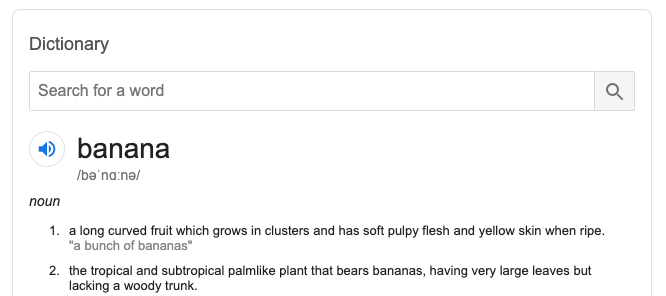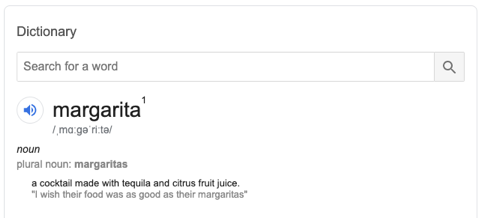Write the lyrics
Tell Me What You See
Write the lyrics
Before we move on…
This recipe is focused on giving you the absolute essentials on how to write lyrics. This is by no means every trick in the book or way to think about lyric writing. It will however get you through writing lyrics for this song and start you thinking about more advanced approaches.
Person and tense
I’ve chosen to write my lyrics in direct voice that means I’m going to use the pronouns “you” and “I”. That turns the singer and listener into the people in the story. The singer is directly addressing the audience. I suggest that you do the same if this is your first song. Once you have written a few you can start to experiment with third person.
You also need to decide which tense to use. Is the song happening now, in the past or in the future. In most cases you should pick a tense and stick with it. I’m going with the present tense.
Start from your outline
Let’s start from the outline you wrote earlier. You need to expand the outline you wrote earlier into lyrics that fit the music and convey the right message and feeling.
Here’s the outline I wrote earlier:
- Verse 1: I’m alone but I’m happy
- Pre-chorus: but now I’ve met you
- Chorus: I can’t do without you
- Verse 2: everything is different now?
- Pre-chorus 2: but the more I know about you
- Chorus: I can’t do without you
- Bridge: Do you need me as much as I need you, I hope you do because
- Chorus: I can’t do without you
Expand the message of the first verse into draft lyrics. Write between three and four lines of five to six words. Write yours before reading on.
Here’s what I ended up with:
I’m free to do anything I want
No one to hold me down
I can stay at the party as long as I want
Or drink margaritas in my night gown
When I try to sing this, it doesn’t fit the music I’ve made. Lets take a look at why that is and how I can fix it.
Form and syllables
When I look at the melody I can see it’s made of three phrases. The first two phrases are the same. They are made of five notes. The last phrase starts the same but ends with a walk up the scale and it is nine notes long.

This means there’s an AAB structure to my melody. Two identical phrases followed by a variation. I need to write lines that fit to this structure. I’ll use one line per phrase. Each line must have one syllable per note. Here’s how it looks if I use “ba” to represent a syllable.
A: ba ba ba ba ba
A: ba ba ba ba ba
B: ba ba ba ba ba ba ba ba ba
Count the syllables in your lines. I use Rappad to https://www.rappad.co/editor to make this quick and easy.
9 I’m free to do anything I want,
6 No one to hold me down
12 I can stay at the party as long as I want
10 Or drink margaritas in my night gown
Now we can see why the lyrics don’t fit. There are too many syllables and the structure doesn’t match. Oops!
Meter
There’s another reason my lyrics don’t fit the music. There’s an inherent rhythm hidden in the words I’ve written and it doesn’t match the rhythm of the melody. We call these rhythms metrical feet.
English words and phrases have patterns of stressed and unstressed syllables. Stressed syllables are louder, longer, higher in pitch and pronounced more clearly.
The pattern of strong and weak beats in my melody doesn’t match the stress pattern of my lyrics.
If I use “ba” for the weak beats and “Bom” for the strong beats you can see the rhythmic pattern.
I found this pattern by singing “bom, bom, ba, ba, bom” along with the melody. When the pattern of bas and boms fits I know I have the stresses in the right place.
A: Bom bom ba ba bom
A: Bom bom ba ba Bom
B: Bom Bom ba ba Bom Bom ba ba Bom
You can see the first two beats of the melody are emphasised and the following two aren’t. This rhythm is called a Spondee which is one of the six basic rhythms used in English poetry and lyrics. I’ve written a reference guide for all six of those rhythms/feet, you can see it here.
Analyse your melody and find out which stress pattern/metrical foot will match. If you struggle with this look up the foot in the reference and at literarydevices.com/. Note that you may have to mix and match different stress patterns.
Now lets change the words to fit. To do this we need to know where the stress is in the words we want to use. Here’s a handy guide.
How to find the beat in your words
1. For longer words, find which syllable is stressed using a dictionary. For example searching google dictionary for the word banana returns this pronunciation string /bəˈnɑːnə/.

This small character ˈ appears before the stressed syllable. So in banana the middle syllable is stressed.
2. Use the form. Count how many syllables are in each line if you haven’t already. This gives you an idea of the pattern you are dealing with
3. Think about the meaning of what’s being said. The logic of the sentence determines where stress will be placed. e.g. “I SAID she told the truth.” verses “I said SHE told the truth.”
4. Single-syllable nouns, pronoun, verbs, and adjectives tend to be stressed. This isn’t a hard and fast rule but it’s a good place to start.
5. Single-syllable articles (a, an, the), and prepositions (by, of, with) tend to be unstressed.
6. Remember that stressed syllables are longer, louder, higher and clearer.
Reworking my lyric
Here’s my first attempt at making the lyrics fit:
A: I do what I want
A: No one hold me down
B: I drink mar ga rit ta in my gown

There’s a problem though “Margarita” doesn’t fit the stress pattern of my lyrics. I’ve got three choices, change the word, change its placement or ignore the fact it doesn’t fit and live with the odd emphasis. I’ve decided that I’m going to use “Margarita” anyway. I like the way it sounds and the image it conjurers.
The next problem is that I can’t fit the whole sentence to the melody.
Looks like I have to find something else to fill that line that expresses the same sort of idea.
I want the last word of the last line to rhyme with the last word of the line above. There are several of types of rhyme not just so called “perfect rhymes” like “down” and “gown”. So I have a lot of choices. I can use rhymezone.com to help me find matches for down and see if that sparks something with my lyric. I’ve also written a guide to different types of rhyme that you can see here.
I’ve collected a few rhyming words that seem to jump out at me.
comedown, town rundown, meltdown, hometown, around, clampdown, profound, rebound, unbound, unsound. Lets try it again:
A: I do what I want
A: No one hold me down
B: I drink mar ga rit as in the town
Sounds OK I’ll live with the slightly imperfect meter of the last line as it’s sounding OK.
A: I do what I want
A: No one hold me down
B: head in a cloud, feet on the ground
I’ve completed my first verse. Here’s what the song sounds like so far.
As you can hear, I’m not much of a singer but I’ve managed to represent the idea. Complete your verse in the same manner.
Once you are done you should have a first verse that flows well with your songs melody.
Repeat this process for the other verses. Subsequent verses should use the same form, rhyme scheme and meter as the first verse. Remember that each verse should advance the story of the song.
Write the chorus
The chorus is your main message, the emotional truth of your song. It’s critical that you get the message across and help your audience remember it. Look at you canvases, some form of your main message may be the chorus line. Look at the song outline you created and think about how the pre-chorus will connect the refrain.
Choose a type of chorus. If your chorus isn’t one of these three, ask yourself why:
- Call to action – “Get into the groove”
- Statement – “I Wanna Dance With Somebody”
- Question – “Do you really want to hurt me?”
You only have three minutes to teach the audience your song. Choruses frequently use repetition to drive the message home. Look up the words to songs you like, note how often the chorus message is repeated. Use one or all of these types of repetition.
- Sandwich repetition – the main message starts and ends the chorus wrapping up anything that’s in the middle
- Internal repetition – Repetition inside a line itself e.g. If we sing “what do you care” and then repeat “do you care, do you care, do you care”
- Complete repetition – the chorus says the same thing over and over. This is taken to an extreme by Daft Punk. The lyrics of their song “Around the world” are simply the phrase “Around the world” repeated 144 times.
If you analyse popular songs you will find they often use fewer words and longer, higher notes. This helps make this section distinct from the other sections of the song.
Apply the same techniques that we used for the verse to make the message fit the chorus melody. Don’t be afraid to change the melody to fit the words.
My chorus is:
“I can’t, I can’t, I can’t do without you”.
Write the pre-chorus
Use everything you have learned so far to write the pre-chorus. Look at the song outline you created and the chorus you have just written. How will the pre-chorus connect verse and chorus?
Remember that its ok the vary the pre-chorus lyrics to make the connection as long as the form and melody don’t change.
Write a bridge if you have more to say
If you find there’s additional story content that will add to the song you can write a bridge. Don’t feel pressured to write one unless you have something compelling left to say. A musical bridge that expands on the melodic theme or adds a new musical element might do a better job of keeping the audience interested.
Now what?
Now you have the lyrics in place it’s time to reflect on what you have done and make improvements.